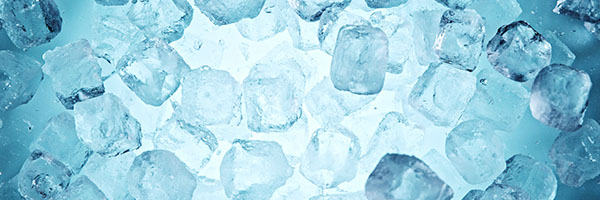Blog
Ice Baths: When are they of benefit?
Are they as cool as all of the hype?
You don’t need to look far to see one of your favourite sports stars dunking themselves in a bath full of ice in the name of recovery.
As we know, recovery is essential for progress. Therefore it would be reasonable to assume that having an ice bath to improve recovery would be advantageous but it all depends on what you are recovering from.

Before we dive in (pun intended) to when ice baths may be appropriate, we cannot do so without discussing inflammation, as reducing or “blunting” inflammation is often the primary goal of ice baths or cold water immersion.
Inflammation has a bad reputation but contrary to popular belief, it’s not all bad. There are two main categories of inflammation; acute and chronic.
Chronic inflammation - is when the body is constantly sending inflammatory cells despite there being no immediate reason to.
Acute inflammation - is the short term response to damage or infection.
When people think of inflammation, they generally see it as being negative, likely due to the association with chronic diseases such as arthritis and HIV.
However, acute inflammation is actually very important for recovery. If we were to sprain an ankle or cut ourselves, we want some degree of inflammation to help that area recover. The body will send white blood cells and nutrients to the affected area to assist in the healing process. We don’t want an area that needs healing completely devoid of the essential nutrients to repair.
When we lift weights or perform any physical activity, we create acute inflammation. As we’ve learned, a small amount of inflammation is good but a lot of inflammation is not. So we don’t want to eliminate inflammation completely, otherwise we may actually compromise recovery, we just don’t want it to get out of hand.
This brings us nicely on to professional athletes who use ice baths to enhance recovery. These are people who train for multiple hours a day and often have very grueling match schedules. Not only that but these are people who are paid to give it their all. You can only imagine the levels of inflammation some of these athletes accumulate. In this scenario, it may be appropriate to use ice baths for recovery and we have several pieces of research to support that.
Tavares et al. (2018) conducted a study on elite rugby players during an intense 3-week training phase and showed cold water immersion helped to reduce soreness and fatigue.
Elias et al. (2013) investigated the effects of cold water immersion in elite professional soccer players and found that sprint-performance recovered quicker in those who had been exposed to cold water immersion as well as seeing reductions in soreness and fatigue.
Brophy-Williams et al. (2013) found that cold water immersion improved subsequent running performance after a bout of high intensity interval training.
In contrast to this, Fyfe et al. (2019) showed that cold water immersion attenuated anabolic signaling and skeletal muscle hypertrophy following resistance training.
Poppendieck et al.(2020) also found small negative effects of regular cooling on strength training adaptations.
This goes to show that cold water immersion can be particularly useful for high intensity endurance training but perhaps not so much for strength and hypertrophy. This makes sense when we consider the duration and frequency of strength and hypertrophy sessions may typically only equate to 8-10 hours per week for most people. Compare that to professional athletes who could be training/competing at a high level for 30+ hours a week and you begin to understand that blunting that level of inflammation may be more useful.
However, some people don’t use ice baths or cold water immersion for recovery. Some people do it for mental toughness, to improve focus and alertness or work on their breathing.
If you see someone using an ice bath, it would be wise to understand why they’re doing it. Are they doing it for recovery or are they doing it for something else? It’s not always immediately obvious.
In summary, it seems that cold water immersion is most effective when looking to modulate increased levels of acute inflammation that is brought on by high intensity activity in quick succession. If you have lots of games scheduled in a short time frame or have a particularly intense week of training where each session lasts for several hours, cold water immersion can stop inflammation from affecting performance. However, for long term adaptations particularly as it relates to hypertrophy, cold water immersion may not be necessary and in some cases may be detrimental. If you are a recreational lifter who lifts 3-6 times per week for 1-2 hours per session, you probably don’t need to use an ice bath and you may even see decrements if your goal is to gain muscle.
About the Author

Harry is an online personal trainer and WNBF men's physique professional from the UK. He's has been working in health & fitness for over a decade and has had almost every job the industry has to offer. From owning a private personal training studio to training Bollywood actors in India and now, coaching clients from all over the world online. Harry also started out competing in natural bodybuilding before transitioning to men's physique where he won the world championships in Las Vegas in 2021. Harry's primary interest is to take more nuanced and complex subjects related to health and fitness and make them more accessible for those who don't have the time to trawl through the research. When he's not in the gym, Harry enjoys going out for drinks with friends and getting his hands dirty with DIY (although preferably not at the same time!).
Instagram @harryranson

337 Comments